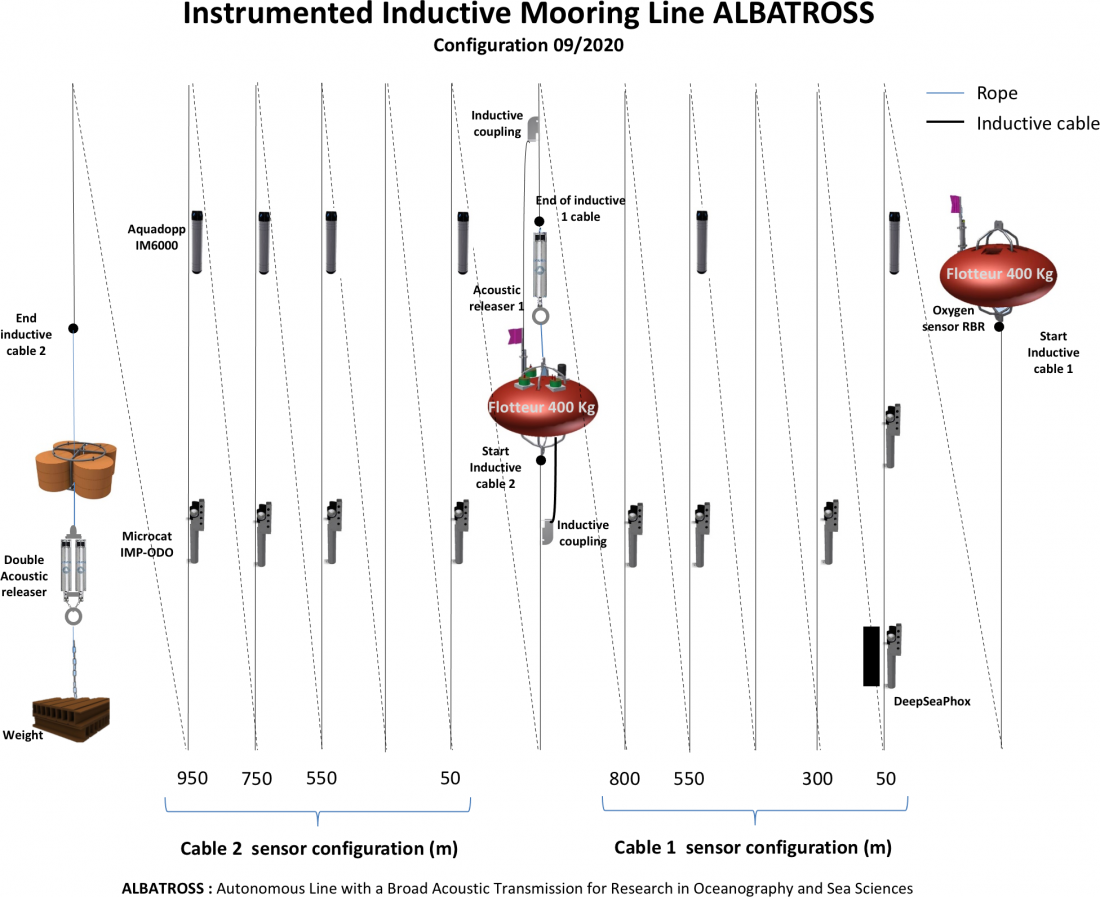EMSO-WL - An underwater observatory as a follow up of the ANTARES telescope
EMSO Western Ligurian - EMSO-WL
The EMSO-LO site, located at 2500 m depth offshore Toulon is part the European EMSO-ERIC infrastructure and EMSO-France Research Infrastructure (European Multidisciplinary Subsea Observatory-European Research Infrastructure Consortium). The EMSO ERIC aims at collecting long term time series over 12 years all around Europe with the objective to follow up the consequences of global change on heat content, ocenanic acidification, de-oxygenation, deep water marine ecosystem. Also EMSO aims to provide tools services for management and mitigation of the ecosystem.
EMSO France is a research built on multidisciplinary observatories, real time ior delayed tilme based on mooring line and deep-sea observatories. The EMSO-LO is supported by the MOOSE national network (Research Infrastructure ILICO).
The EMSO-LO is dedicated to the monitoring of the water column including hydrological properties, the northern current dynamics and impact on the water column, the effect of deep-water convection in Western Mediterranean Sea on deep ecosystems properties and functioning.
Connection between surface production, particle fluxes and state variables to infer ecosystem functioning via proxy such as bioluminescence, O2 and quantify biological pump variability and dynamics.
BathyBot - A benthic crawler to see the unseen of the deep NW Mediterranean Sea (EMSO-WL)
BathyBot is the benthic counterpart of the EMSO-WL infrastructure. This exploration robot is teleoperated, cabled, dedicated to the long-term survey of environmental variables in the deep-sea (Salinity, temperature, pressure and current) but also to the biology, thanks to two video-cameras and LEDs of several colors as well as an imaging system mounted close by (UVP-6). BathyBot will allow seeing the bioluminescence emitted by organisms and will provide a better understanding of its ecological role.
Near by BathyBot, the BathyReef will be deployed, it’s a coloniser bio-inspired by marine sponges’ structures. Each module has been 3D-printed.
Currently under test, in a test-pool, it will be deployed close to the EMSO-WL site. This oceanographic cruise will take place at the end of 2021-beginning 2022 on board of the N/O Pourquoi Pas ? using the submersible Nautile for its connection.



